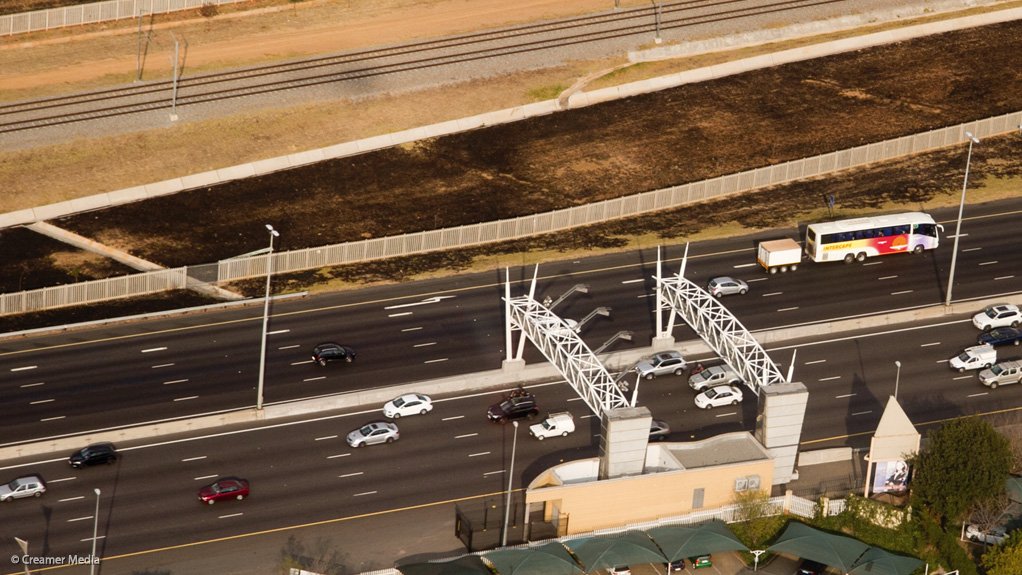A new “fair, affordable and sustainable” fee structure has been tabled for users of the South African National Road Agency Limited’s (Sanral’s) Gauteng Freeway Improvement Project (GFIP), Deputy President Cyril Ramaphosa announced on Wednesday.
To mitigate the increasing challenge of Gauteng’s disobedience and refusal to pay the e-toll fees that Ramaphosa admitted, in its current form, had placed a disproportionate burden on middle- and low-income households, the tariffs would be cut in half.
Sanral would, over the next few months, in phases, apply a single, reduced tariff to all motorists, with light motor vehicles passing the gantries liable for a standard tariff of 30c/km and a monthly cap of R225 – regardless of whether the user had an e-tag or not – from the current 58c/km, R450 cap applied to registered users.
The new e-toll dispensation, which was the product of “extensive public consultation, deliberations within government and approval by Cabinet”, would see revised, reduced rates and caps applied to other vehicle classes.
However, users who failed to pay tolls within the allotted 30 days would be charged double the tariff. This, too, would be capped at R450 to protect users from incurring large amounts of debt through arrears.
The new dispensation, which would cut Sanral’s revenue by R390-million a year, would also allow for a 60% discount for users with current outstanding e-toll bills – as long as the debt was settled within six months.
Further, the settlement of e-toll fees would be linked to motor vehicle licence renewals, to “further simplify the process and ensure better integration of road management systems”, Ramaphosa said.
Public transport would remain exempted, while infrequent users, passing the gantry less than 30 times a year, would not be charged.
In the interim, Sanral was in the process of introducing more payment options and a simplified administration system.
Ramaphosa said the principle of the user-pay system was “generally accepted” by citizens, despite a significant decrease in the uptake and compliance of e-toll users over the past year.
Earlier this year, Transport Minister Dipuo Peters admitted in a Parliamentary reply that the uptake of registered e-toll users each month plunged from over 350 000 in December 2013 to 20 000 a month by April 2015.
Sanral had also shown a significant disconnect between the revenue forecast from the e-toll system against the actual revenue generated.
In December 2013, Sanral forecast revenue of R37-million, with the actual amount received pushing over the R60-million mark.
This trend had steadily reversed as the forecast revenue surpassed that of the actual revenue generated when, in July 2014, Sanral’s forecast of R131-million revenue a month was not met as the actual tolls received fell to R109-million.
In February 2015, Sanral found itself in a shortfall of more than R100-million as only R61-million of the forecast R206-million revenue was collected.
Sanral’s monthly expenses reached R66-million a month, with the maintenance and toll operations costs of the system accounting for the bulk at more than R47-million.
Routine road maintenance reached R7.7-million a month, intelligent transport systems and incident management cost R6.3-million and lighting R5-million each month.
EMAIL THIS ARTICLE SAVE THIS ARTICLE
To subscribe email subscriptions@creamermedia.co.za or click here
To advertise email advertising@creamermedia.co.za or click here











